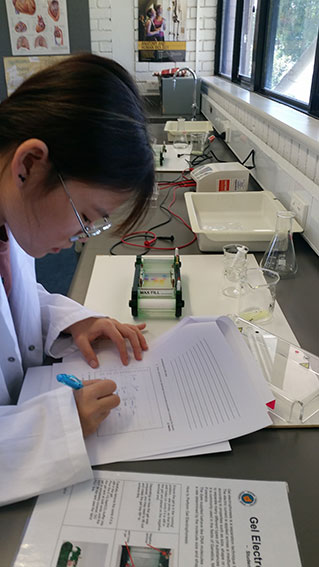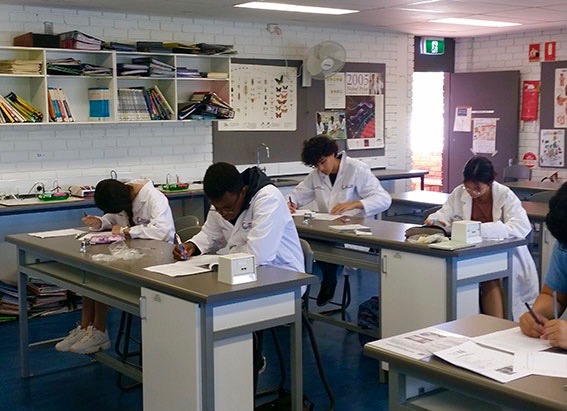
As part of their current studies into genetics and inheritance, Kirsten’s Year 12 ATAR Biology class recently had a chance to learn about DNA profiling. DNA profiling has been getting a lot of media coverage recently with some high profile criminal cases in Perth relying heavily on this type of forensic evidence to prosecute suspects in murder cases. DNA profiling can also be used in determining the parentage of an individual.
Small amounts of DNA left at crime scenes, for example from skin or hair cells, can be collected and analysed using DNA profiling techniques. Every body cell will have this DNA with half of a person’s DNA inherited from their mother and half from their father. Every person has a unique DNA profile with the exception of identical twins who share the same profile.

DNA profiling usually relies on extracting the DNA from cells, copying it to make enough for analysis and then cutting certain sections of the DNA using specific enzymes. The gel electrophoresis technique can then be used to separate the cut sections from each other using an electrical current. They appear as a series of bands of different lengths, with shorter sections of DNA moving further away from their source toward the positive electrode end. A dye is also attached to the bands so they fluoresce under UV light making them visible.
In this practical, the students were given four DNA samples and a scenario where they had to use gel electrophoresis to determine the parentage of a humpback whale calf, by analysing the DNA of four whales in the pod and seeing which whales had matching bands of DNA. The class initially had fun practising pipetting tiny amounts of sample into an agar jelly plate to get a feeling for the technique, which is fiddly and involves a lot of precision (and no shaky hands!) Then it was time to put the DNA samples into the gel electrophoresis agarose gel plates and run an electric current through to separate the bands.
All students were able to successfully determine who the whale calf’s father was.
Overall it was a very interesting practical and the students enjoyed learning about DNA profiling. Jenni Rolfe and Sue Price are thanked for their assistance with providing support and equipment for the practical.
